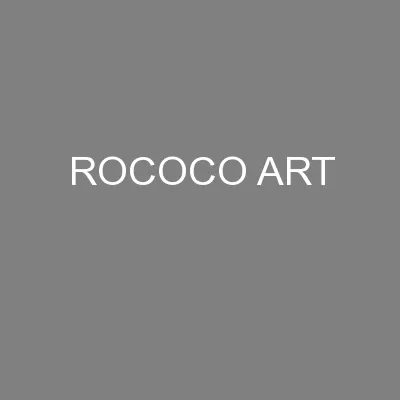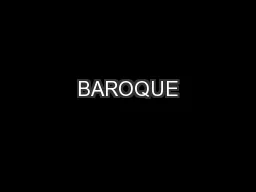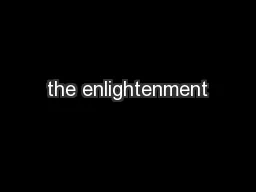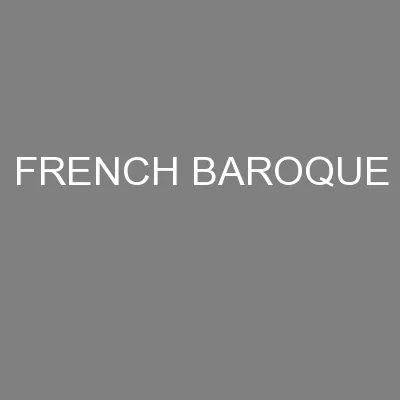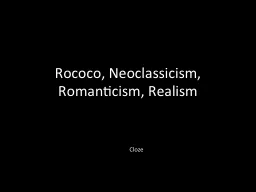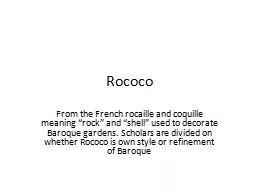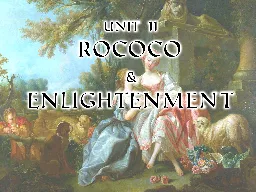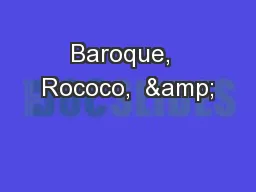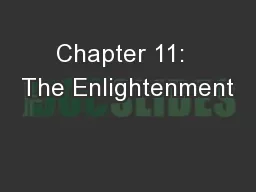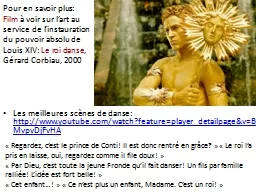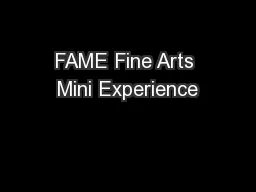PPT-ROCOCO ART
Author : liane-varnes | Published Date : 2016-03-13
Was born in Paris where it coincided with the reign of Louis 15 th It was outdated by the 1760s in France but it continued to impact other parts of Europe The
Presentation Embed Code
Download Presentation
Download Presentation The PPT/PDF document "ROCOCO ART" is the property of its rightful owner. Permission is granted to download and print the materials on this website for personal, non-commercial use only, and to display it on your personal computer provided you do not modify the materials and that you retain all copyright notices contained in the materials. By downloading content from our website, you accept the terms of this agreement.
ROCOCO ART: Transcript
Download Rules Of Document
"ROCOCO ART"The content belongs to its owner. You may download and print it for personal use, without modification, and keep all copyright notices. By downloading, you agree to these terms.
Related Documents

